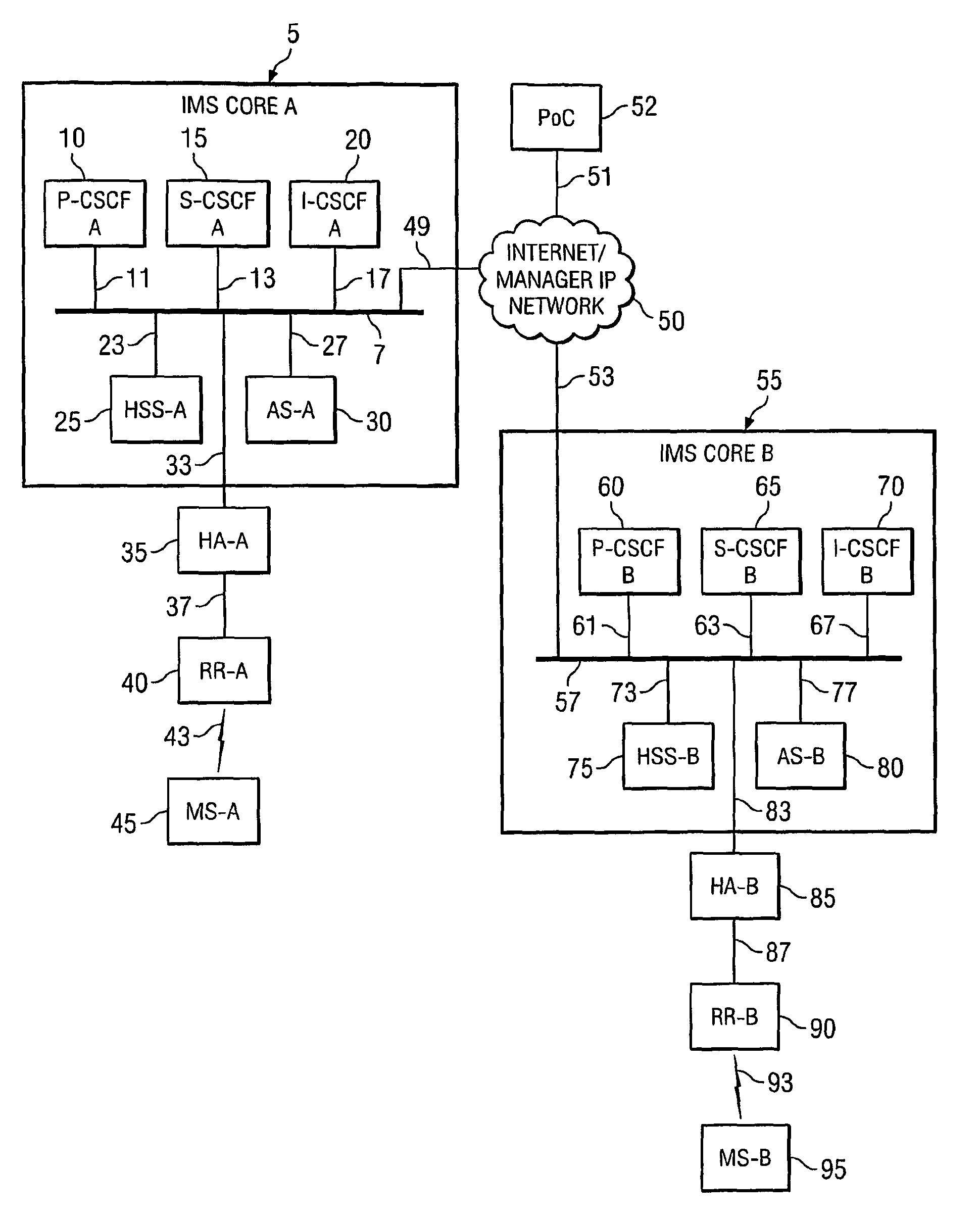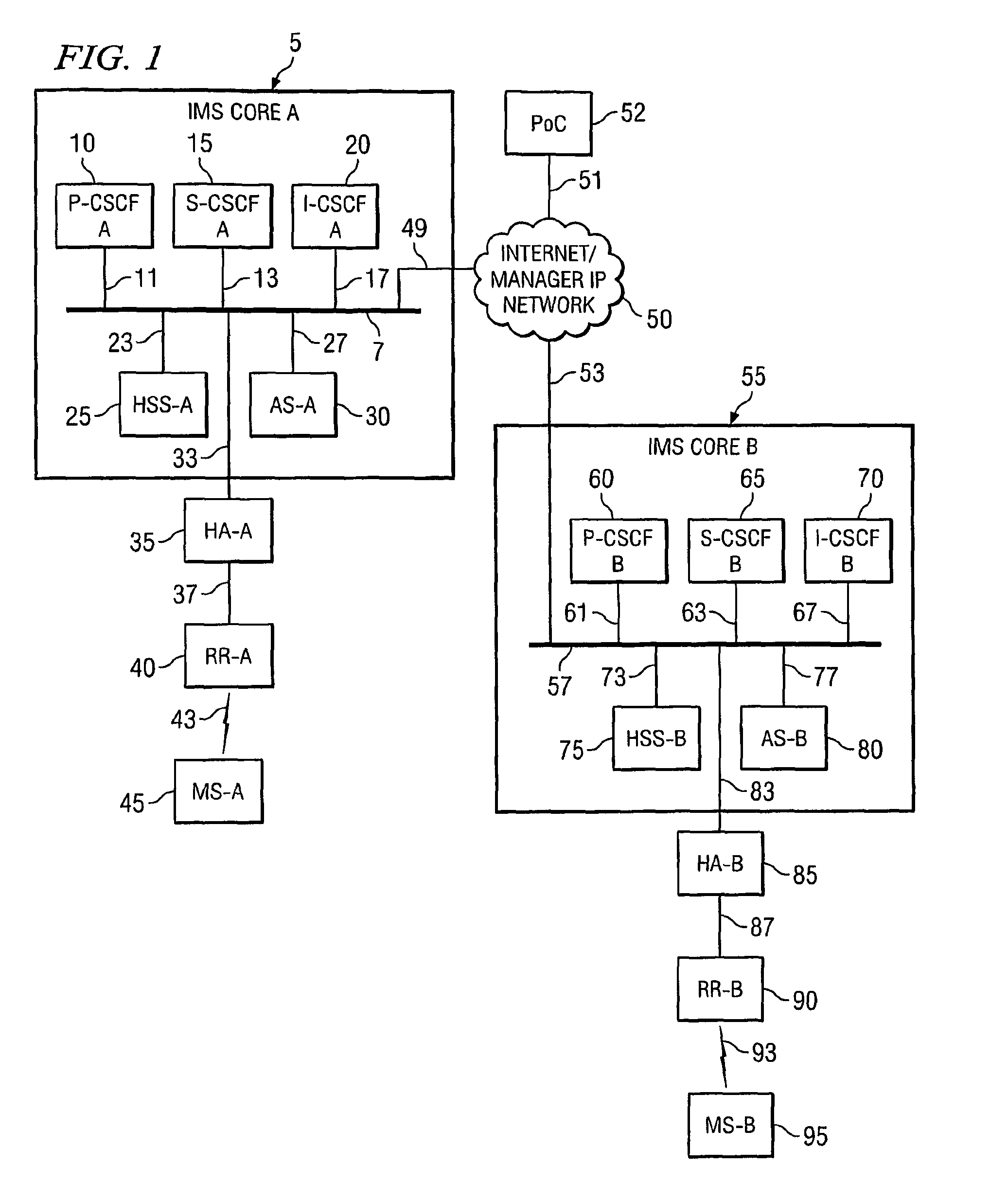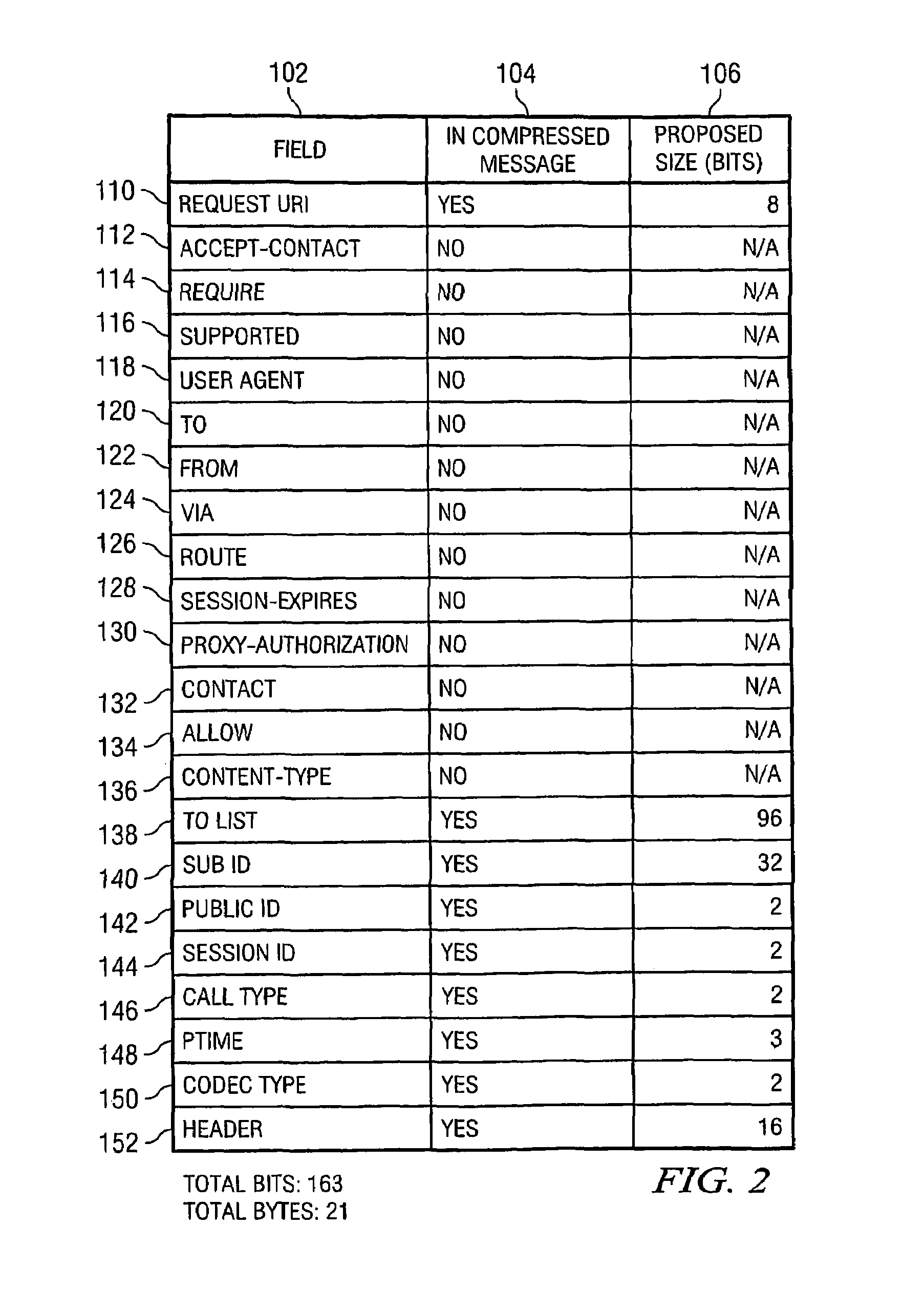Push-to-talk optimization
a technology of push-to-talk and optimization, applied in the field of push-to-talk optimization, can solve the problems of large collection of incompatible computer networks, inability of computers on these different networks to communicate with other computers across network boundaries, and large collection of military computer networks, so as to reduce the size
- Summary
- Abstract
- Description
- Claims
- Application Information
AI Technical Summary
Benefits of technology
Problems solved by technology
Method used
Image
Examples
Embodiment Construction
[0039]FIG. 1 shows a preferred embodiment of a communication system using the invention. FIG. 1 list the functional elements of a pair of cellular network communication in a PTT protocol utilizing flash orthogonal frequency division multiplexing (F-OFDM). OFDM allows a single transmitter to transmit on many different frequencies with a high resistance to interference. Two networks are shown.
[0040]The first network A includes the Internet Protocol Multimedia Subsystem (IMS) core A 5. The IMS Core A 5 comprises five functional elements. The Proxy Call Session Control Function (P-CSSF-A) 10 is the SIP proxy server for the linked mobile stations. The P-CSCF-A 10 forwards messages between the mobile stations and other SIP servers and handles the policy control function for Quality of Service (QoS) authorization. The P-CSCF-A 10 is linked to a central buss line by communication link 11. The Serving Call Session Control Function (S-CSCF-A) 15 is the SIP registrar, with cooperation from the...
PUM
 Login to View More
Login to View More Abstract
Description
Claims
Application Information
 Login to View More
Login to View More - R&D
- Intellectual Property
- Life Sciences
- Materials
- Tech Scout
- Unparalleled Data Quality
- Higher Quality Content
- 60% Fewer Hallucinations
Browse by: Latest US Patents, China's latest patents, Technical Efficacy Thesaurus, Application Domain, Technology Topic, Popular Technical Reports.
© 2025 PatSnap. All rights reserved.Legal|Privacy policy|Modern Slavery Act Transparency Statement|Sitemap|About US| Contact US: help@patsnap.com



